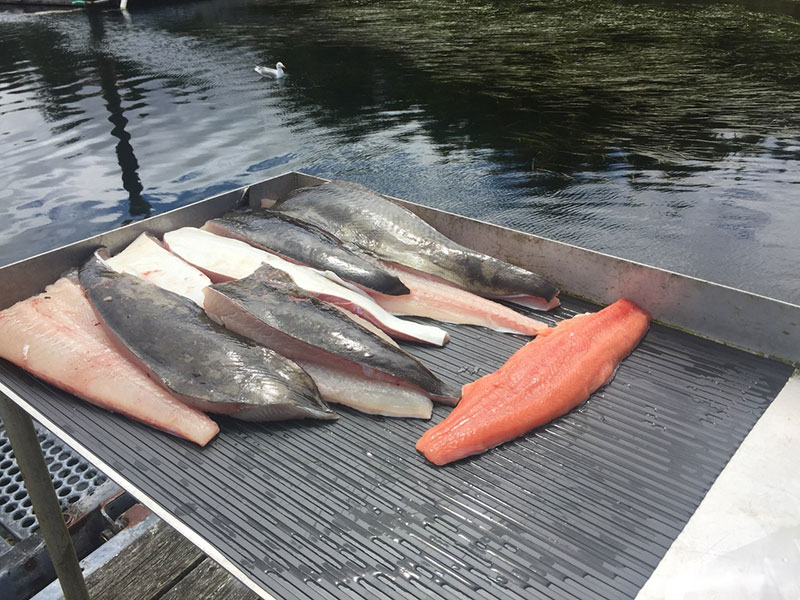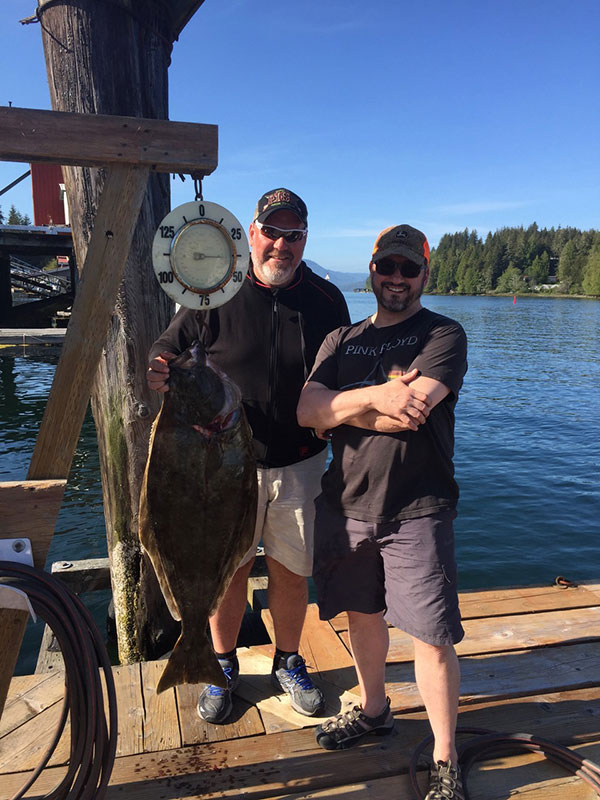After several years of relative stability, the management regime for the recreational halibut fishery on Canada’s Pacific coast has undergone some change for the 2018 season. Naturally enough many anglers will be wondering why, especially when they know that a commercial fishery is taking place, one that catches far more halibut and without any maximum size limit either. The answer is slightly complex and requires some understanding of the all-fishery management structure and its history.

In the big picture, halibut in the northeast Pacific Ocean from Oregon to Western Alaska have been managed under a Canada/US treaty since 1923. The International Pacific Halibut Commission (IPHC), which implements the terms of the treaty, has its own staff who provide recommendations for consideration at the annual Commission meeting regarding management area TAC’s (total allowable catches) for the season ahead, based on the results of stock assessment survey fishing conducted in the recent past.
Against a background of declining fishable abundance in recent years, for one of the very few times in the long history of the treaty at the annual meeting in January 2018 Canada and the US were unable to agree on national TAC’s. Using the precautionary principle Canada unilaterally made the decision to fish to a 7.1 million pound all-fishery TAC this year, down from 7.45 million pounds in 2017. Because the current allocation framework between the commercial and recreational fisheries’ shares—their combined allowable harvest on an 85/15% split—the recreational allocation fell from 1,118,000 pounds last year to 928,000 pounds for 2018.
For those who can remember back past last Christmas you may recall that the 2017 recreational halibut season closed Sept. 6, by which time it was estimated that the recreational allocation had been caught. Closures in-season have been shown to have negative socio-economic consequences to coastal communities but as long as the recreational fishery is trapped in the current sharing arrangement these are an annual possibility.
The size, rate and areas of recreational halibut catch is now much better understood than a decade previously but the catch each year is subject to many variables like weather, price of fuel and salmon fishing success, all of which are hard to predict with any certainty and which may lead to a faster rate of harvest than any modeling based on the catch in previous years can describe. A review of the history of halibut allocation is outside the scope of this article but suffice it to say that the early closure last year in combination with diminished opportunities this year have propelled the present commercial and recreational allocation arrangement back “onto the front burner” in terms of issues critical to recreational fishery management.
So what will be the regulations for the season ahead? At the time of writing (early March) we don’t know, although DFO is more than likely to use the recommendations of the Sport Fishing Advisory Board, with whom it consults on recreational fishery management. Given the reduced recreational TAC the discussion was challenging, with a variety of opinion on how best to use the 928,000-pound allowance. The SFAB continues to advocate for as long a season as possible (customarily Feb. 1 to Dec. 31) so given the poundage cap that government has decreed the maximum size of halibut allowed to be retained had to be reduced from the past few years maximum 133 cm length, or about a 70 pound fish, or an even earlier closure would be a certainty. Another decision was whether to continue to allow anglers to have two halibut in their possession away from home—some advisors advocated reducing that to one fish which would have allowed the retention of a larger halibut.

In then end, the SFAB majority decision was to recommend a continuation of the one halibut per day, two in possession and six per year regulation. After extensive discussion reviewing a number of options, the SFAB recommended a maximum length of 115cm, or about a low 40’s pound fish for the larger halibut, with a continuation of the 83 cm (15 pound) maximum size for the second fish in possession. These are in all likelihood the size regulations that will be adopted for the 2018 season but we won’t know until an official Fisheries Notice is issued by DFO.
Keen early season halibut anglers will have noticed however that the season began with a 133 cm maximum size limit for the larger fish. The reason for this is that the license year (April 1 – March 31) is out of sync with the calendar catch year. So if there’s a regulation change between years and the season begins prior to April 1 then the previous year’s regulations apply until then. One of the reasons that the opening of this years recreational halibut fishery was delayed a month was to avoid any “gold rush” of effort by anglers seeking larger fish than will likely be allowed later on, with poundage implications later in the season.
All of this inter-annual regulation variability could be avoided if government would simply choose to give the non-commercial fishing public a fair share of the halibut allowable catch. However, both Liberal and Conservative administrations appear to favour the privatization of 85% of the resource in the hands of several hundred individuals, many of whom were given the quota for free in the first place and no longer actively fish it themselves.
To be continued…






